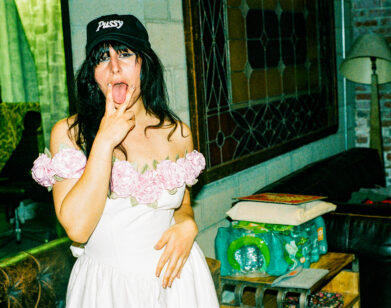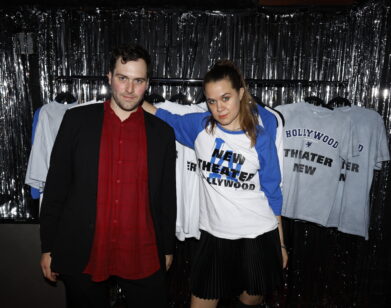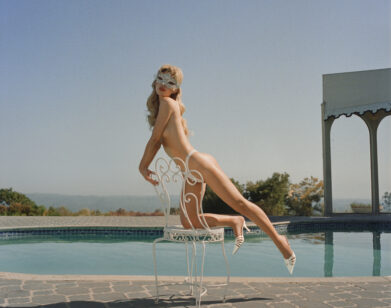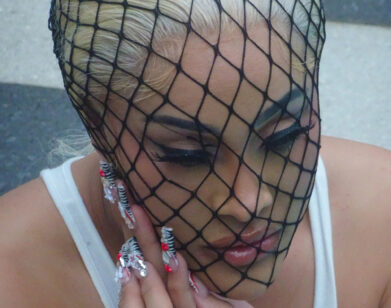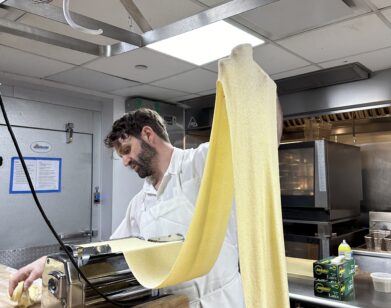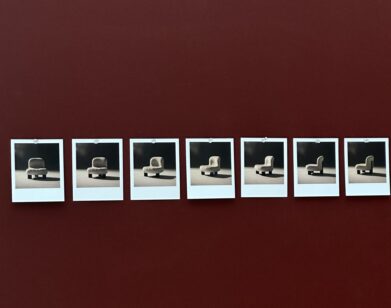The Cult of Mau
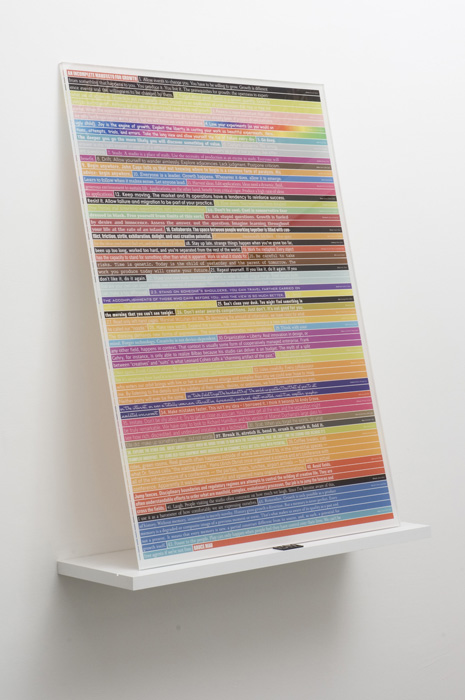
For non-members of the cult of Bruce Mau, the dispute is usually with his outlook. Mau is the Canadian industrial and graphic designer admired and criticized not so much for any identifiable aesthetic than for his forward thinking and (some say naïve) optimism. His Toronto and Chicago studios, Bruce Mau Design (BMD), employ filmmakers, architects, writers, and artists who all work under the aegis of innovation for a better future. Mau is both a professor and advisor to his employees—they’ve been known to refer to BMD as “Bruce Mau University.” And for young designers with heady ideas of solving the world’s problems through design, Mau represents a sort of figurehead.
Mau’s best-known works—S, M, L, XL, the 1,300-page book he co-authored Rem Koolhaas designed to jolt contemporary urban architecture out of its conventional thinking; Incomplete Manifesto, an articulation of Mau’s approach to problem-solving; Life Style, a collection of Mau’s essays that first consolidated his reputation as a leading thinker in design; and Massive Change, a multimedia project on sustainability—are social projects that propose ways to think about and change our lives for the better. They’re more an architecture of ideas than physical design objects. (LEFT: AN INCOMPLETE MANIFESTO FOR GROWTH, 1998)
Last week, “Manifesto,” a show of contemporary graphic design, opened at XYZ Gallery, a new nonprofit space in Treviso, Italy. Organized by Venice design studio Tankboys and copywriter Cosimo Bizzarri, “Manifesto” features thirteen design all-stars (Mau, Stefan Sagemeister, Mike Mills, Enzo Mari, Bob Norda, and others), each of whom contributed a graphic poster representative of their personal “manifesto.” Mau was a natural choice for the show—his every project feels like a manifesto, in degrees; they all have a clear vision for the near-future that is unrelenting, and hopeful.
ZHONG: For “Manifesto,” are you doing something new, or are you using an older piece?
MAU: We did a new version of the Incomplete Manifesto. The tension in the project is to articulate both leadership and collective.
ZHONG: And how is that expressed in this piece? It looks like a word puzzle.
MAU: I’ve always had a leaning toward games and systems.
ZHONG: You give the people who work for you autonomy. How do you manage that?
MAU: I don’t know. [LAUGHS] Contrary to a lot of my own thinking and writing, what we do we do as animals. And then we have the brain come along to figure out why we’ve taken those actions. It’s a dirty little secret, but all the theory and process and tools in the world are nothing without talent.
ZHONG: Talent and sensibility are not exactly the same thing, obviously.
MAU: For me, sensibility is the location of talent. Sensibility comes first because only with the right kind of sensibility is talent useful. I’ve met many people who are extraordinarily talented but have no capacity to go outside of themselves or their field. I love those people, but they would not succeed in our culture.
ZHONG: So that’s what this piece is basically saying, the updated Incomplete Manifesto you’re doing for XYZ?
MAU: Yeah, it’s about our cultural collaborative experience. Graphically, physically, it’s a very simple game that makes use of a very complex image.
ZHONG: I also wanted to talk to you about Massive Change, your project on sustainability.
MAU: We were very careful not to make it futuristic. We were careful not to say, “This is about how someday we are going to do this.”
ZHONG: The proposals made in the book are very viable. They chart the progress and push the boundaries of processes that we’ve already started, like the use of solar power or high-speed train travel.
MAU: In Massive Change we identified ten “design economies,” and across all those economies one of the things we discovered through this extraordinary inventor, Ray Kurzweil, is that people across the world are doubling our capacity to move information every 12 months.
ZHONG: Every 12 months? Since when?
MAU: For a long, long time. The most amazing part of his research is that it’s very consistent and very predictable. So what seem like “A-ha!” moments are in fact an ongoing process that is very consistent. So he can predict quite accurately how long it will take to do certain things next year and the year after and in ten years.
ZHONG: How accurate have these predictions been?
MAU: Kurzweil worked with the Human Genome Project, and from the beginning, he predicted that it would take 15 years to decode the human genome and many of the researchers said, “Ray, you’re off by orders of magnitude. It’s going to be 150 years.” And he said, “No, according to my research it will take 15 years because we will double the capacity to decode the genome every year during each of those 15 years. That means every year we will cut in half the time it takes to do the work.”
After seven-and-a-half years they had a conference and the scientists said, “We’ve now decoded one percent of the human genome after seven and a half years.” And everyone said, “Even we were off by orders of magnitude—it’s going to take 700 years!” Kurzweil said, “No, we’re right on schedule. And if you take one and double it seven times, you get over 100 [percent].” And that’s exactly what happened.
ZHONG: At what point did you decide that design was not just so much about aesthetics or function, but more of an ideology?
MAU: Fairly early on. I was always more interested in, “What are we doing?” not, “What does it look like?” Of course, I also famously said, “I don’t give a damn what it looks like.” Then I spend most of my time worrying about what it looks like. [LAUGHS] The first company I started when I was 23 was called Public Good; the idea of that was to do things that contributed to the world. It was a very naive, simple-minded idea that was very personal.
ZHONG: Now you’re working on the Denver Biennial.
MAU: It’s unclear how we’ll be involved in the realization of the festival, but the project that that comes from is a follow up to Massive Change. In Good We Trust came out of an insight when we were doing Massive Change. We noticed this extraordinary movement that we called the Revolution of Possibility. What’s happening, what Kurzweil describes is happening, when you’re doubling the capacity every 12 months, you’re putting entirely new tools into the hand of billions of people. For me that’s staggering that it’s not the biggest story in human history! The mayor of Denver invited me to do a project during the Democratic National Convention last year and we did a project about a sustainable America. Look at what happened in the first eight years of this millennium: we’ve had an inversion of American public opinion around the world. Somehow, at the turn of the century thought, 70 percent of people around the world had a positive image of America—
ZHONG: We managed to lose that good will.
MAU: We managed to invert it to 70 percent negative. If you set out to do that you couldn’t! When I moved to America I was like, “Americans are awesome, look what they’re doing!” And Americans would say, “Really? That’s so surprising. We don’t see that.” During the first eight years of this century, the number of charitable organization in America doubled. We invented Wikipedia and offered free access to all human knowledge in 264 language. That’s what Americans were doing, what citizens were doing, not the government.
“Manifesto” is on view through October 31. XYZ Gallery is located at Via Inferiore 31, Treviso, Italy.

